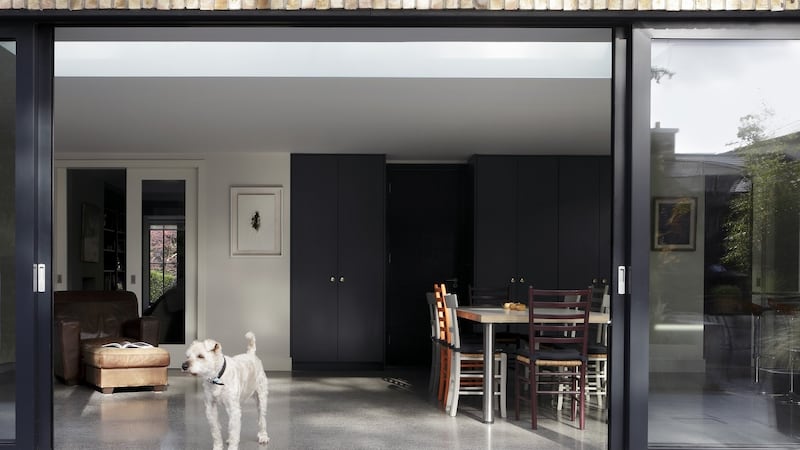Open-plan living spaces sometimes get a bad rap. But when extending a home to create a multifunctional space it’s easy to make mistakes. Open-plan spaces need careful planning, otherwise they can end up turning into a big room that’s difficult to furnish, noisy and full of stuff. But if you get it right you can really enhance your quality of life. Here are some dos and don’ts for planning an open-plan space.
Don’t… stick a big square box on the back of your house. This may seem obvious but often the focus is on adding space rather than enhancing what’s already there. As soon as you extend you change the quality of the space in the existing house. From the amount of daylight it gets to the flow within the space, these rooms will need to be reconfigured to work with the new addition.
Do… plan the room to suit your lifestyle. Do you need to build some flexibility into the layout? Will you need to be able to close areas off at certain times? Think about how you want to feel when you are there – do you want it to be calming and relaxing or energising? This is where your needs, the stage of life you’re at and your personality all come into play. By thinking about the feeling you want to evoke, you will be surprised how having this clear in your mind will help you make better informed decisions. From choosing flooring to designing the layout, this is what underpins a successful outcome.
Don’t… forget about storage. It is the secret to maintaining a clutter-free open-plan space. If you haven’t considered exactly what you need to store you’ll be facing a constant battle over where to put your stuff. Designated storage is far more efficient and useful than general store cupboards where everything gets thrown in and it is impossible to find anything. The saying “a place for everything and everything in its place” really applies to open plan.
Do…opt for designated storage solutions rather than a one-size-fits-all approach. Think carefully and let what you need to store dictate the kind of storage that you select. For example, are the items that you need to store being used every day? Things that need to be accessed frequently should be stored in a way that allows easy access.
Don’t…over light the space with too many fixed downlights – the result will be harsh and will tend to create glare. Instead, install directional fittings that light the walls to reflect light back into the room. Try not to rely solely on ambient and overhead lighting as it tends to be purely functional as an overall illumination for a space. It is generally achieved either by overhead pendants or spotlights. Make sure you include some secondary lighting such as floor and table lamps. Not only will they help to dress a room but they will also create atmosphere.
Do… have separate circuits to control the mood of the space and ensure that you lights can be dimmed. If you are considering smart or automated lighting controls this is the area to go for it. An automated system will allow you operate off one switch plate on which you would have each setting programmed, providing effortless control to create the perfect atmosphere whatever the occasion.
Be warned, when planning the lighting for an open-plan scheme you should do so with the location of your furniture in mind rather than simply focusing on the ceiling.

Don’t…forget about the garden when planning the space. When you extend your living space outside, you gain additional living space and by carrying the internal finishes outside you can create the illusion of both your internal and external spaces feeling larger. Working the garden into your home improvement and linking the ground floor living space with the outdoor space is also a guaranteed way to add value to your home.
Do… try to make the transition between inside and out as seamless as possible. Choosing a floor finish that can be used internally as well as externally works very effectively. Floor-to-ceiling glass doors are another successful way to link inside and out. Whether the doors are left open or closed, the boundary between the two areas is blurred.





